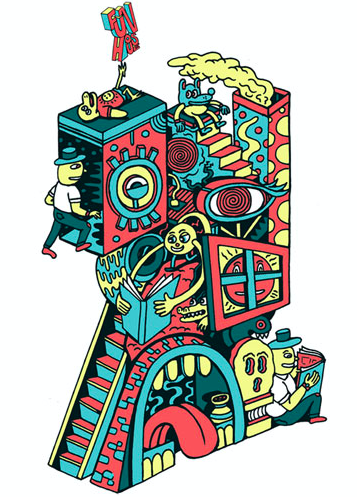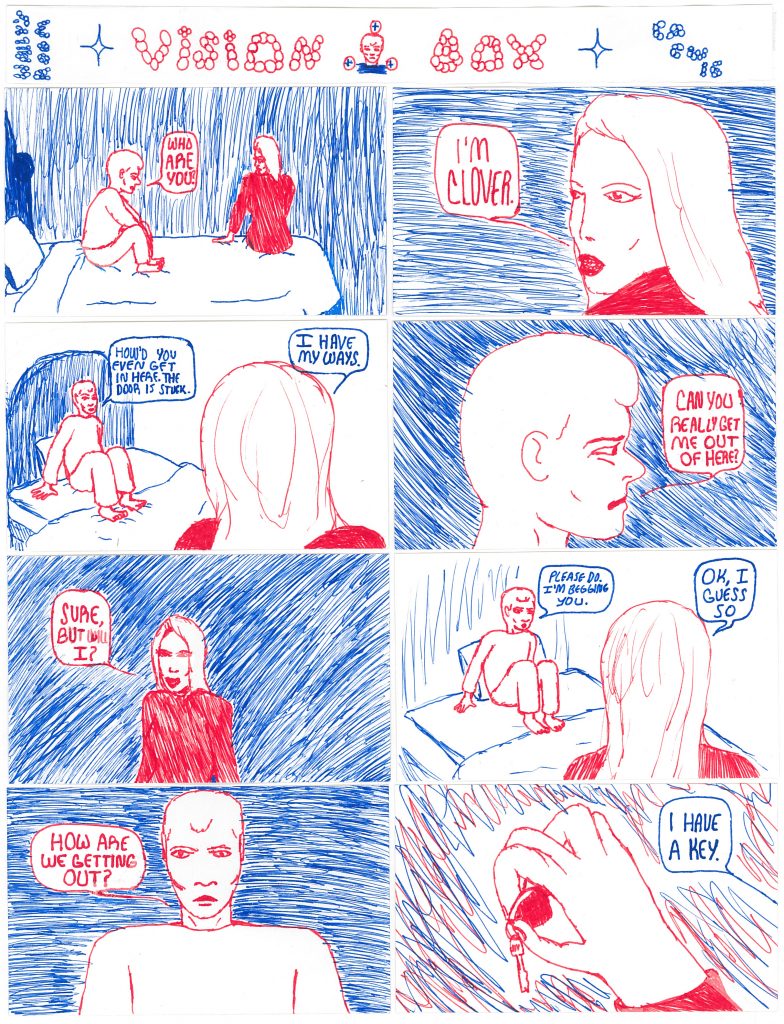Aaron here today with FUNHOUSE; Comic Aht; Teju Cole/Lorna Simpson; Dash & Nancy; Bill Plympton
—————————————————————————————————

An Interactive Book Fair
This weekend at The Drawing Center, 35 Wooster Street, NYC.
On the weekend of March 24 – 25, Desert Island and The Drawing Center will present FUNHOUSE, a new, interactive book fair at which guests can make their own books in collaboration with resident cartoonists and illustration artists.
FUNHOUSE Book Fair
March 24–25, 2018
11am–5pm | Tickets $10 via Eventbrite hereFUNHOUSE guests will interact with resident artists to create unique pages for one-of-a-kind books to be assembled at the fair. The resident artists will also have their own publications available for purchase at General Store within the FUNHOUSE fair, with games of chance, author signings, special activities, and giveaways of artists’ books. A SIDESHOW of talks, lectures, and presentations will be organized by FORGE. art magazine’s Matthew James-Wilson. Additional spectacles, like life-size interactive cut-outs and funhouse mirrors will provide wacky fun and photo-ops galore!
FUNHOUSE artists include: Gabrielle Bell, Lilli Carré, Rob Corradetti, Joanna Fields, Laura Perez-Harris, Abby Jame, Jeff Ladouceur, Sarah Lammer, Gary Lieb, Richard McGuire, Walker Mettling, Ben Passmore, Oskars Pavlovskis, Monica Ramos, Jim Schuessler, R. Sikoryak, Whit Taylor, Matthew Thurber, Thu Tran, Mark Wang, Kelsey Wroten, Gina Wynbrandt, and JooHee Yoon. FUNHOUSE is organized by Gabe Fowler of Desert Island and Molly Gross of The Drawing Center.
—————————————————————————————————
But is it…Comic Aht? #1, edited by Austin English with contributions from August Lipp
Early issues of The Comics Journal offered quiet pages for artists to study, piecing together the practices and ideas of favorite artists in lengthy interviews. After a month of thinking about what a cartoonist said in a discussion, some debate of those ideas would appear in the next months letter column. The weight of a cartoonists words could be digested, embraced, rejected and most importantly THOUGHT about, rather then reacted to.

—————————————————————————————————

On Photography
Teju Cole on Lorna Simpson’s work:
Like “Waterbearer,” many other works of Simpson’s from that period — including “Twenty Questions (A Sampler)” (1986), “Five Day Forecast” (1988) and “7 Mouths” (1993) — are both figurative and fragmentary. Evenly lit, crisply photographed, they look like pictures from an illustrated medical dictionary, indexical images of heads, torsos and mouths that are detached from context. Even in a work like “Figure” (1991), the figure in question, sheathed in a black dress and set in the black infinity of no particular place, feels like a fragment, as though she had been extracted from a group photo or a furnished room. The texts accompanying her, eight engraved plastic plaques, read like excerpts from a language primer: “figured the worst,” “he was disfigured,” “figured there would be no reaction” and so on. Here, not only has the story been winnowed down; it is in fact completely gone. There’s no story. We are left with only the tensions of concrete poetry.
—————————————————————————————————
Grown Men Reading ‘Nancy’
Over at the New York Review, Dash Shaw looks at the new How to Read Nancy book, by Mark Newgarden and Paul Karasik:
Today, comics are studied in colleges and reviewed in prominent magazines, but they are often discussed either as vessels for urgent, personal stories or as objects filled with beautiful, unusual graphics. They are rarely discussed or reviewed for their “cartooning,” the particular panel-to-panel magic, the arrangement of elements that mysteriously combines reading and looking, and distinguishes why a comic like Nancy is masterful and others are not. Beautiful cartooning affects a comic the way a well-chosen word, arriving at the right time in a sentence, makes for good writing, or the way a room composed with the right combination of things in the exact right places is good interior design.

—————————————————————————————————
Bill Plympton discusses his career and how to survive as an independent filmmaker.
Plympton will screen Tiffany the Whale, Footprints, Cop Dog, Slide (preview (2 min.), Revengeance clips and Simpsons Couch gag The Artiste.
—————————————————————————————————
Vision Box – 3-20-2018 – by Cameron Arthur
